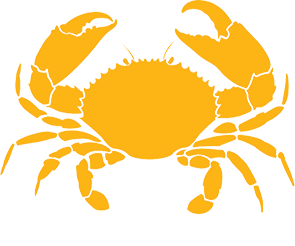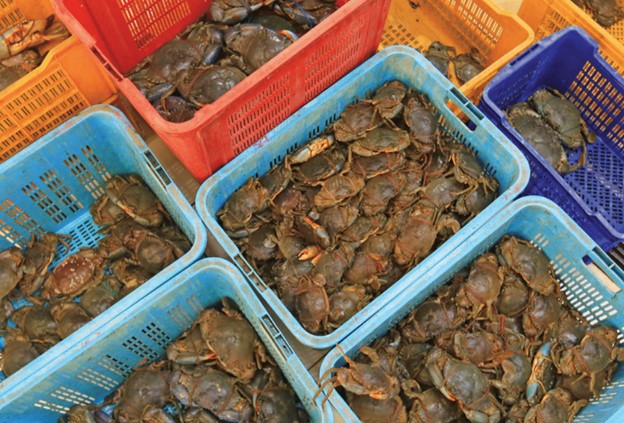
- Home
- About Us
- Philosophy
- Accolades
- Meet the Ministers
- The Menu
- Hansard
- Pop-Ups
- Concept Store
- Reservations
- Select a Location
- Contact Us

The sunny coastal town of Negombo, was bustling as we approached. Especially within the Nikasa Seafood Factory, which was eagerly awaiting the arrival of lorries bearing the valuable catch of Sri Lankan mud crabs from across the island. Once the lorries arrived, the hubbub of chatter and laughter vanished as the fresh catch of crabs was unloaded and taken to the factory. These Sri Lankan mud crabs have made a long, yet interesting journey from the island’s lagoon waters. To gather this bounty, a flotilla of traditional outrigger canoes called “Theppama” in Sinhalese, sets sail on the lagoon waters of Kalpitiya, Batticaloa, Mannar, Jaffna and Trincomalee everyday. The catch of that morning’s canoes was now before our eyes at the Nikasa Seafood Factory. As we peeked into the plastic crates we saw that the mottled green crabs’ two sharp pincers had been tied with a nylon string. Nikasa Seafood was founded by Pushpakanthi Jayasinghe’s late husband, R Ranjith Sisira who had become a close confidante of Dharshan as they worked together to build the ingredient supply chain for Dharshan’s restaurants. Today, Pushpakanthi and her son carry on this partnership with the Ministry of Crab. Within minutes of arrival, we witnessed the sorting of the crabs. Pushpakanthi inspected every crab attentively and in the wink of an eye she decides whether the crab is fit to head to MOC. The crustaceans with broken claws were carefully sorted into another crate. Once in a while a bold mud crab would attempt to crawl up despite its tied nippers, but would be placed back in the crate carefully. Nikasa Seafood only supplies Sri Lankan lagoon mud crabs sourced from their natural habitats as these crustaceans have a distinctive flavour, which is quite different to that of farmed mud crabs. The crabs sorted based on their size and quality were again packed inside foam boxes, which were labelled with the exclusive crab sizes of MOC. Six tiny holes were made on every box to allow air circulation for the crabs. Dharshan, concerned about the conservation of the environment and always makes it a point to send back the boxes, so that they can be reused. “Only the best of the crabs are selected for MOC, which even surpass the quality of crabs packed for exporting.
Being aware of the quality Mr Dharshan always expects, Nikasa Seafood never fails to meet his demands”, says Pushpakanthi. Every morning she informs MOC about the quantity of crabs available, to ensure the restaurant will be able to cater to their eager diners. After another round of weighing the foam boxes, they were loaded onto lorries as the Sri Lankan crabs continued its journey to MOC. Lorries head to MOC from the Nikasa Seafood Factory twice a day. Once the lorries had been waved off, the employees took a break, and enjoyed a cuppa, until the next round of work began.
